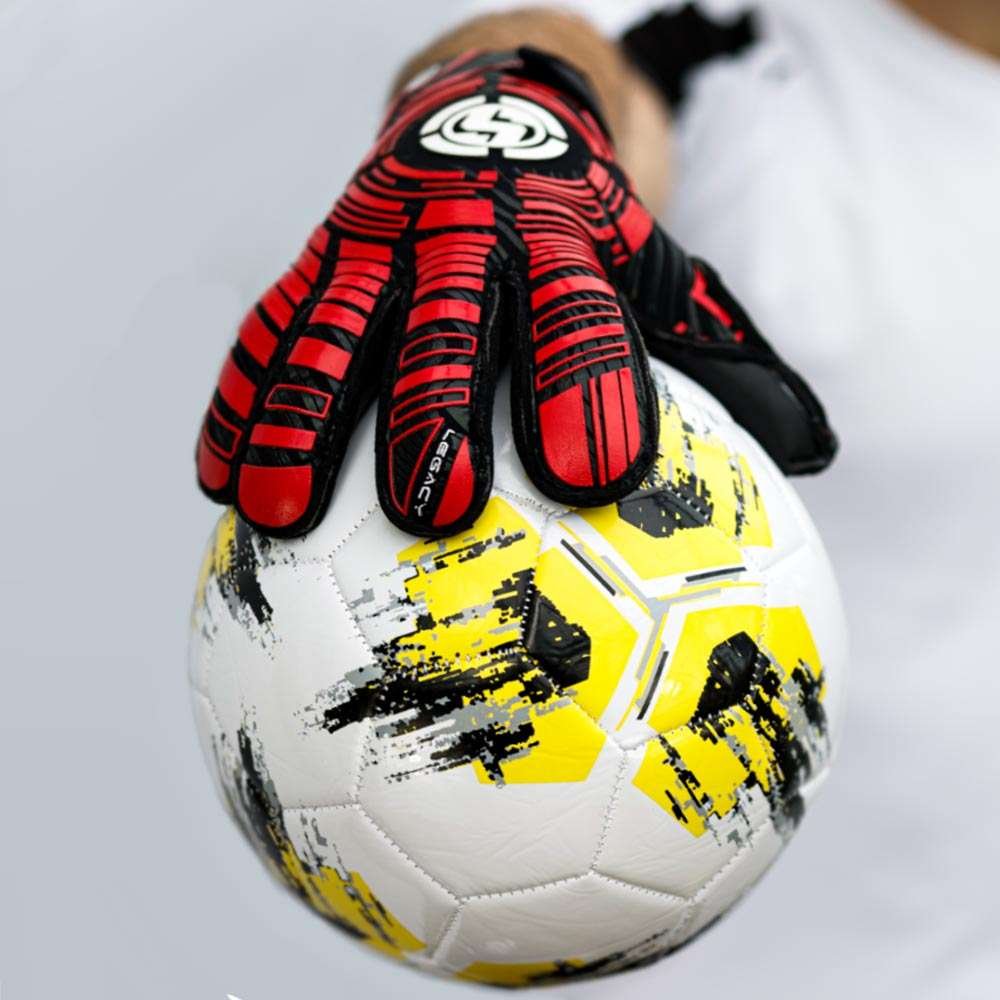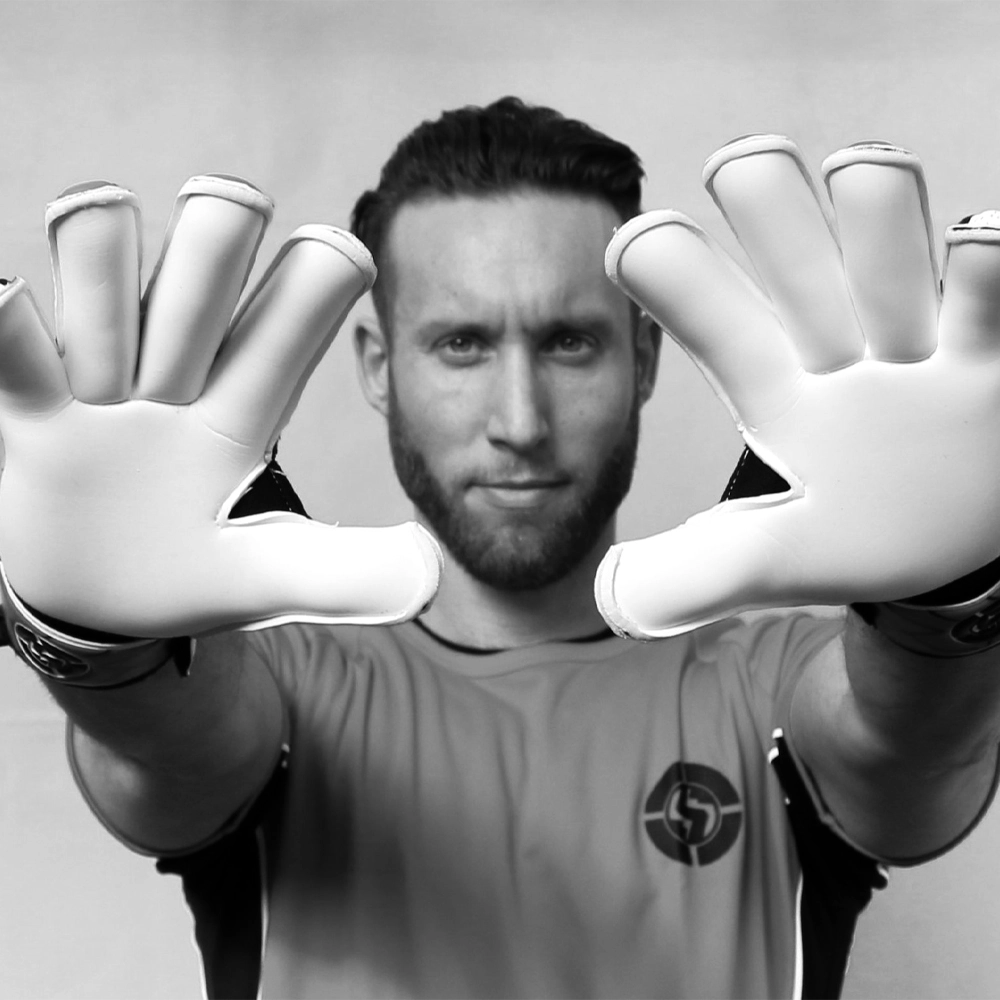It may seem like an odd question, “Do you need to wear goalkeeper gloves?”.
The gloves are one of the most distinct parts of a keeper, and they’re one of the most important items in a keeper’s kit. But in reality there is a long history of football goalies playing without gloves. In fact the game on average has been played longer without goalkeeper gloves than it has with. As far back as the original written rules of the game (Laws of the Game from 1863), goalkeeper gloves were never mentioned, and not a keeper in sight would be sporting a pair for close to a century. It wasn’t until the mid to late 60’s in which goalkeeper gloves started regularly appearing in some professional matches.
The reason for bare handed keepers wasn’t some kind of testament to superior performance that only a bare palm could provide. The reason for the lack of gloves used by goalkeepers for most of football’s history stems from a rather simple explanation. They were hard to find, and the materials used to make them were not a mainstream manufacturing staple. Materials used to make the gloves hadn’t been fully refined into the polished versions they are today, even goalkeeper gloves made in the late 90’s have a drastically different feeling than the best goalkeeper gloves in 2021. Don’t believe us? See if your dad has a pair of his old gloves from the 80s or 90s buried away somewhere to try on.
Additionally the fact that incredible players like Lev Yashin and Gordon Banks played with no gloves, it seemed like the need for gloves was a non issue. Some of the titans of the sport were doing incredible things without gloves, and so, combined with their rarity, keeper gloves as we know them now, seemed like a frivolous accessory.
Sure there were keepers who made their own glove equivalents throughout the years, from bandaged palms, leaving the fingers free, to large woolen knit gloves. Various mitts when playing in inclement weather. But the vast majority of games were played with barehanded keepers.
Since then however, goalkeepers gloves have become ubiquitous, and much more widely available. You can purchase goalkeeper gloves in most any local sports store, or online shop nowadays.
The techniques used by keepers have also changed and evolved significantly along with the usage of gloves becoming mainstream. Goalies needed a certain type of glove for handling crosses, stopping shots from close range during penalty kicks and saves from long distance shots. The gloves of today allow keepers to make different types of saves than what barehanded players (or even those with the earlier iterations of keeper gloves) would have been able to accomplish. Finger protection and the stopping power found in most quality goalkeeper gloves today allow shots to be stopped with even the tips of the fingers, a feat that in the earlier days of the game would have resulted in strained, sprained, or even broken fingers from powerful shots (and often did).
So with the advancement of goalkeeper technology, the superior stopping power and hand and finger protection provided by today’s gloves, combined with their popularity leading them to be a main piece of gear in every goalkeeper’s kit, they surely must have updated the rules to reflect that, right?
Well actually, no.
To this day there are no professional rules stating that a keeper must wear gloves of any kind (your local league may have its own rules). There is no requirement in FIFA’s official rules, or in their equipment guidelines. There are guidelines that pertain to the emblems and branding found on a glove, and mention that the glove can be of any colour. But there is no regulation requiring a player to actually wear them.
But before you consider ditching the gloves and recreating Ricardo’s penalty save against Darius Vassell in 2004, stop and ask yourself why you’d want to?
Modern Goalkeeper Gloves provide far better performance than playing without.
The premium rubber and latex palms provide far more grip than what is capable of a human hand.
The cushion protects palms from powerful kicks, allowing you to play longer, and with less pain, both during and after the game.
Gloves with Fingersave technology both protect your fingers from hyperextension injuries, and makes you less likely to have the ball roll over your finger tips when stopping a shot.
Even the wrist straps can provide protection against wrist injuries.
With both the massively increased stopping ability, and the largely improved safety factor, why would you not want your goalkeeper gloves to be a vital part of your kit?
Additionally, consider that if you’re a modern goalkeeper, you’ve likely been practicing and training with techniques that work either in part, or entirely because of the qualities lent to you by the gloves. Should you discard your gloves, you’d likely have to take several large steps backwards in order to relearn your craft.
So with that said, what do you need from your gloves?
– A good goalkeeper glove should be able to cover the whole hand comfortably, and not be too restrictive. There are many different cuts and styles of glove including, flat palm, roll finger, negative cut, and hybrid cut, both with and without fingersave. So find the cut and style that works best for you and fits you best. A good fit will allow you to move your fingers freely and have a relatively high degree of control over the ball. If your glove is too tight it will limit your range of motion and if it’s too loose it can be very annoying when diving or trying to catch a ball. It should also not restrict the natural movements in your wrist, which are crucial if you want to make sharp reactions or quickly move around the goal post while trying to block shots.
– The gloves should be water resistant yet breathable. Not completely waterproof as constant playing with wet hands can cause rashes (waterproof materials work both ways. They keep water out, but it also keeps water and sweat inside).
– The grip is very important. A quality rubber or latex palm that can grip and stick to the ball, even if the ball is wet, is an important quality in a pair of GK gloves.
– A certain degree of flexibility in order to not limit your movement during the game too much.
– Durability is a big factor as well. buying gloves made with top quality materials will extend the life of your gloves much farther than that of a cheaper model. Your gloves go through a lot, so making sure they’ll last is a big factor.
And of course, the gloves have to feel comfortable enough for you to want to wear them for all those hours that you’re training and competing.
We hope this article has provided you with some insight into the history of goalkeeper gloves, and how that history has progressed over the years in order to provide you with what is truly a vital piece of goalkeeper gear!



